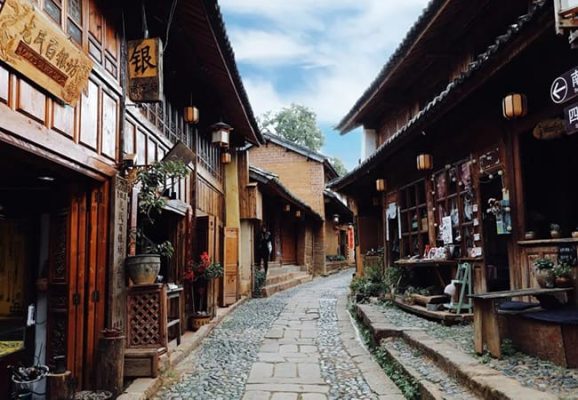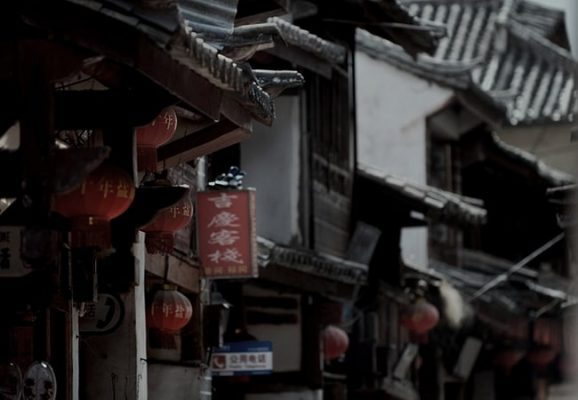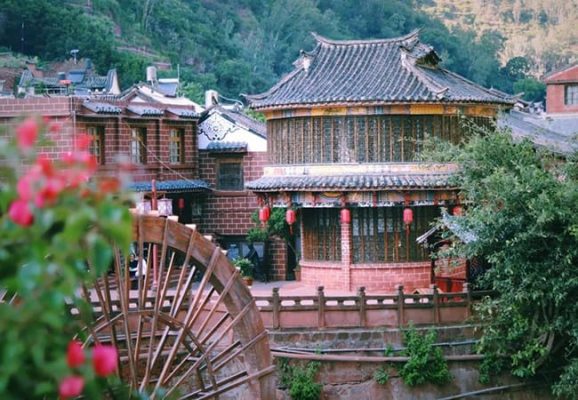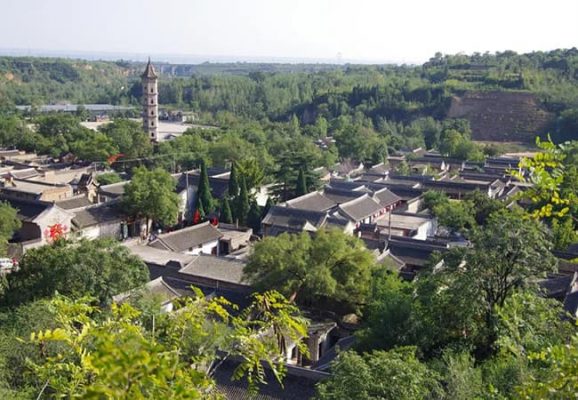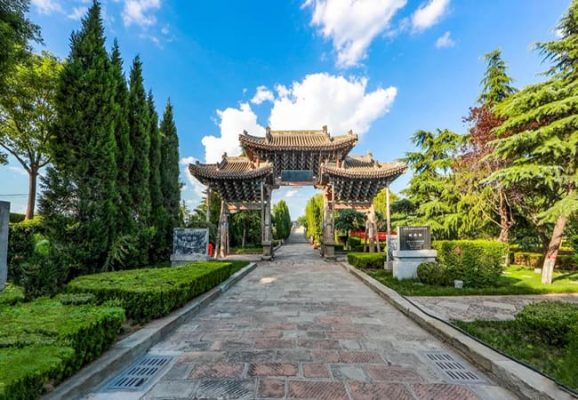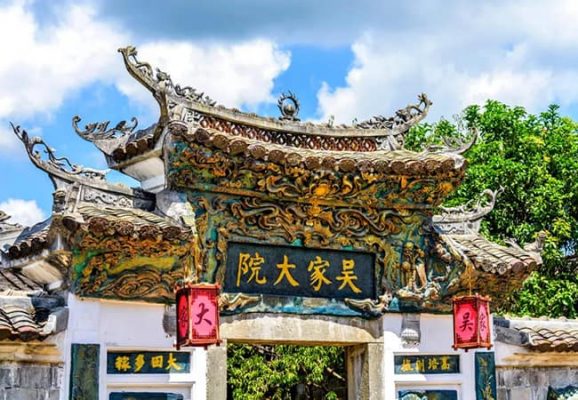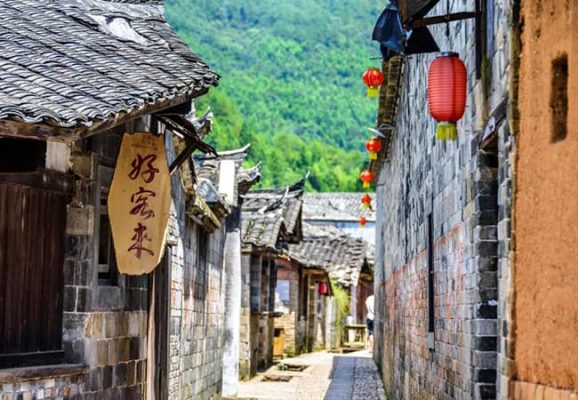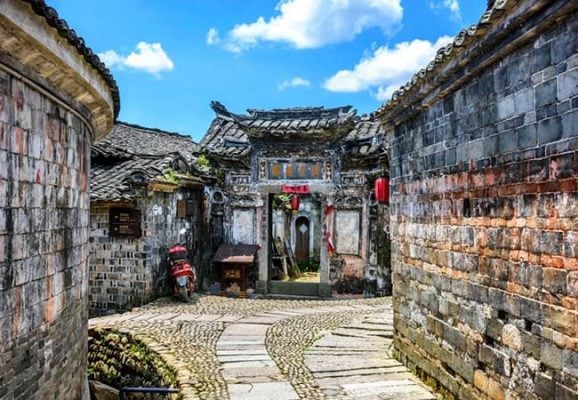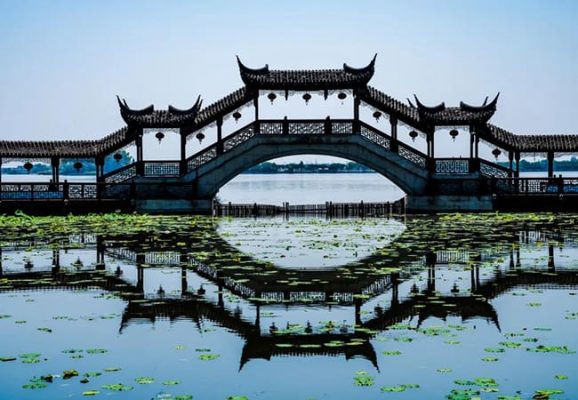Discover Spring that Hidden in These Splendid Towns of China
Is there anything more comfortable than wandering around in a small town during the warm Spring when flowers blossom? A small town with a quaint charm can always give people the feeling of traveling in time.
Today, we have chosen 6 small towns suitable for visiting in spring for you. You may be able to catch up with the local festivals and experience the authentic town life, or you can enjoy the time-limited scenery when the spring is just coming. Let’s have a relax in these charming towns.
Shaxi, Yunnan
Peak season: March, June to October
Shaxi is an ancient town hiding under Shibao Mountain and beside the Heisui River. The grandest festival in Shaxi is the Prince’s Party on the eighth day of the second lunar month, which lasts for about half a month. Starting from the first day of February, the eighth day of February is the busiest day.
Maybe you will spend half of the day by sitting in the cafe next to Xingjiao Temple, basking in the sunshine lazily, and watching the friends kicking the shuttlecock in Sifang Street. When you are sleepy, you may back to the inn transformed from the old horse shop to take a nap and chatted with the horse shop owner. On Friday, there will be a market, people from the mountains will gather in this once tea-horse market, and the life of the locals will be lively and vividly displayed before your eyes. Those who are diligent and energetic can climb Shibao Mountain not far away, worship the Bodhisattvas in the caves, walk around the surrounding villages-Changle, Duan Jiadeng, etc., visit the local carpenters and stonemasons, and even walk all the way to Mapingguan in the mountains,or you can also explore the stories on the ancient tea-horse road and take a cultural journey.
There are many traditional villages near Shaxi Ancient Town that are suitable for walking or cycling to visit. There are Kuixing Pavilion and Sanjiao Temple in the Changle village in the west. It takes about one hour to walk back and forth from Shaxi Ancient Town. 3.5 kilometers to the east is Duanjiadeng Village, where there are the Local temple, the Donghuang Temple, the Divine Land Temple and the stage. Among them, the stage is located in the west of Duanjiadeng, which was built during the Qianlong period of the Qing Dynasty. Now it has been modified and built into a homestay. You can sit under the stage and enjoy a cup of Pu’er tea.
4 kilometers south from Shaxi, there is Dazhaobi, the largest City God Temple in Dali Prefecture. The City God Temple fell into disrepair for a long time, and was converted into a granary during the “Cultural Revolution”. Many propaganda posters of the time remained in it. However, the Swiss Development Cooperation Agency is repairing the City God Temple, which will become part of the Shaxi Low-Carbon Community Center in the future. 2 kilometers further south is a stone arch bridge “Shi Ao Bridge” in the Qing Dynasty. It was the first important bridge to enter Shaxi on the Ancient Tea Horse Road. There is a fork road 500 meters south of Shi’ao Bridge, and you can reach a spring outlet called Bailong Pond by going uphill through Hongxing Village. This pond is about 8 kilometers away from the ancient town. Although it is not big, it is surrounded by ancient trees, which is very quiet and suitable for meditation. When the flowers bloom in spring, locals are keen on coming here for picnics together.
- 5 things to do in Shaxi
- Wandering around Si Deng Street, there are places to rest everywhere.
- Ride a bike or walk to the surrounding traditional villages.
- The grottoes on Shibao mountain are enough for you to watch for a day.
- Buy some fresh vegetables of the season on the market street, especially in the season of mushrooms, take them to the restaurant or bring to the inn to make it your own.
- Don’t miss the market on weekend, which is a big gathering of mountain people.
- Tickets and permits
»No tickets are required to enter Shaxi Ancient Town.
»Some courtyards and temples will charge 5-10 yuan for tickets.
»Tickets for Shibaoshan Mountain Scenic Area are 50 yuan.
Peak season: March, April, September, October
The rape fields in March and the quaint and beautiful Huizhou architecture have made Wuyuan a cultural imagination of Jiangnan countryside for everyone. Whether you open the map or be on the scene, you will never think that Wuyuan is a small town. But as long as you get on the minibus and leave the county town to walk into the century-old houses by the fields and creeks, you will find that there is a long aftertaste behind every wonderful name. Red maple leaves, old ancestral halls, ancient camphor trees, stone bridges… The big and small villages in Wuyuan preserve their different qualities difficultly, or the gathering of Huizhou merchants, or the large number of learned men, or the exquisite structure, or the abundant water
The place that was originally unknown to the outsiders gradually emerged with the footsteps of Pathfinders. The unchanging nature seems to be Wuyuan’s enduring method, and the capital that attracts travelers to explore again and again is derived from the secret of “the next village is better”. How to avoid the crowds of tourists like rape fields in Wuyuan which is hot every year? There are still some secluded places to choose from the scattered villages of Wuyuan.
Hongguan: The famous Huimo village built in the Southern Song Dynasty, with row upon row of Huizhou roofs and horse head walls, is no less spectacular than any ticketing scenic spot. The highlight here is not just the “No. 1 camphor in the south of the Yangtze River” at the entrance in the village. The stone road of Huirao Ancient Road runs through the entire village, and along the old road to the south, the Jijiu Bridge in Chaguan Village is also a famous scene in Wuyuan.
Huangcun: Note that this is not the more famous Huangling near Jiangwan. Huangcun Village is located 3 kilometers southwest of Likeng, where there is a famous podocarpus pine. Yu Qingtang, built in the Yongle period, is simple and elegant, and is a national key cultural relics protection unit.
Cifeng: Located in Cifeng Village, which is rarely visited on the Western Route, it is quite popular among architects. In Chengyi Hall, built in the Tongzhi period in the north of the village, there are magnificent archways and scattered openwork and high relief. Continue north, the two villages of Kongcun and Kengtou are more simple and quiet.
Jujing: What has made Jujing famous in recent years is its title of “China’s Roundest Village”. The semicircular river flows almost around the village, and the Huizhou buildings with white walls and black tiles are scattered. Climb the opposite hillside to overlook the panoramic view of this round village. There are fewer accommodation options here, so you can head to Gutan Township to settle down.
Hongcun: Hongcun, known as the “Hometown of Longevity”, is located in the southwest of Tsinghua Town. It is not covered by the pass because it is hidden in the mountains and the transportation is inconvenient. Less tourists will come to visit it. But the well-preserved ancient houses and three sculptures built along the river are worth seeing. There are also good photography materials here during the autumn season.
- 6 things to do in Wuyuan
- Between rape blossoms and Huizhou architecture, enjoy an unforgettable rural feast in Sixiyan Village.
- Avoid Summer heat in Wolong Valley and Lingyan Cave.
- In the early morning of late autumn, take pictures in wonderful Shicheng.
- Dive into the depths of the mountains and get to know Likeng, a famous official and eunuch who is knowledgeable.
- Take a hiking journey in Guankeng-Lingjiao or Shicheng-Changxi in the wild yellow flowers or full of autumn scenery.
- Come to Wuyuan to spend a Chinese New Year, and enjoy the original bench dragon, Nuo dance or lifting pavilion with the villagers.
- Tickets and permits
»Wuyuan has a pass that contains 14 scenic spots (Wolong Valley, Shicheng, Lingyan Cave, Rainbow Bridge, Sixiyan Village, Yantian Ancient Camphor Garden, Wengong Mountain, Jiangwan, Likeng, Xiaoqi, Wangkou, Jiangling, Huangcun Baizhu Ancestral Hall, Yuanyang Lake).
»Tickets are sold separately for scenic spots such as Huangling, Hongcun, Yuantou, Likeng, and Qingyuan.
»Villages such as Jujing, Chaping, Hongguan, Chaguan, and Zifeng are free.
Heijing, Yunnan
Peak season: April, July to October
The quaint town in central Yunnan, where the prosperity has faded, time has frozen, prices have not soared, wealth are rare appeared again, but the remnants in the streets can still withstand you to explore with your eyes, to see salt, play with salt, and eat some salt in Heijing.
Located in the mountain river valley of Lufeng County, central Yunnan, Heijing has experienced the glory of the traditional salt industry as the salt capital of Yunnan for a thousand years, and also bears the decline of the traditional salt industry. There is not the glamour of most of the bars and clothing shops in the ancient town, and the souvenirs sold in the old street shops are not rich in variety. Many tourists came and walked away, and the sound of the Longchuan River was still not in a hurry. If you want to experience this ancient town more, you might as well stay for the night to share the silence in the night of the river valley.
In April, when the pomegranate blossoms, the spring breeze bring some happiness for the old people left behind in the village. At this time, Heijing seemly woke up. The Jiexiao Zongfang next to the Wuma Bridge at the entrance of the town was built by Emperor Guangxu of the Qing Dynasty. It was carved from red sandstone, a local specialty, with exquisite patterns. The two ancient post roads for transporting salt in Heijing were first built in the Han Dynasty, leading to Kunming and Wuding respectively. You can look for them when climbing mountains.
- 5 things to do in Heijing
- Make a unique salt that belongs to you only in the ancient salt workshop..
- A bite of local feast including Salt stewed chicken, salt stewed liver, salty dry…
- Strolling in the market, straw sandals, smoking guns, and colorful lines that all have a special beauty.
- Climb to the Dalong Temple halfway up the mountain, overlooking the small town that stretches along the Longchuan River.
- In summer, play with the elementary school students who came here to cool off on vacation on the bottom of the river valley.
- Tickets and permits
There is a 30 yuan ticket to enter Heijing Town, which includes scenic spots such as the Dragon Temple, the Wu Family Courtyard, and the ancient salt workshop. The rest of the attractions are free of charge. Generally, you will not be stopped and charged when you enter the village by car, when you need to buy the ticket, you need to go to the tourist center.
Hancheng city, Shaanxi
Peak season: April, July to September
The quaint and complicated historical buildings, the streets with wells and alleys, the shops in the front and backyards, the towering wooden eaves of the old houses, and the wooden counters are soaked in soy sauce for decades… this is the existing scenery of Hancheng, maybe never appear again.
The cultural and military origins of China have left a deep mark on this important town on the Yellow River checkpoint. Sima Qian, a sage of ancient history, was a native of Zhichuan in Hancheng. In the Ming and Qing Dynasties, the culture was prosperous and Hancheng was even more elegantly known as “Little Beijing”. The old town of Hancheng was formerly called Jincheng Town and was built in Jinyuan. There is still a complete Jindai pagoda on the northernmost mountain plateau. There are still many Ming and Qing courtyards scattered in the streets and lanes of the town.
However, this ancient town with a history of 1,500 years is now facing the situation of relocation of residents and development of the “old city revival”. The merchants on Jincheng Avenue, the main street, have moved out one after another, but the demolition has been vigorous, but the investment has been delayed. While there are still some authentic market customs to see, it is also to be separate from the solidified time in the old streets and alleys. This is also worth a visit.
The small food stalls in the old city are mainly in Nanguan and the comprehensive market, mainly snacks, the most famous mutton glutinous rice must not be missed. The food and beverages of Hancheng New City are concentrated in Longmen Street and Zhuangyuan Street. If you want to eat them all, the scale of the Minyang Night Market at the bottom of the southwestern slope of the New City is surprisingly large. Here you can not only eat special foods, but also snacks and various barbecues from all over Weinan.
- Interesting festivals in Hancheng
- Celebrate the Spring Festival in Hancheng. In the first month, the lion dance and the big show will show you a special New Year flavor.
- On Qingming Festival, the villages of Feng and Tong of Xu Village next to Sima Qian’s tomb will all pay homage to the ancestor Sima Qian.
- May 21st and August 18th of the lunar calendar are the temple fair days of Hancheng City God Temple.
- Every year on the tenth day of the sixth month of the lunar calendar is Dayu’s birthday, there will be grand celebrations in Dayu Temple has.
- Tickets and permits
»No ticket is required to enter the Hancheng Old Town, and the Confucian Temple ticket is 15 yuan. No tickets are required to enter the City God Temple alone.
»Tickets for Sima Qian tomb are 50 yuan, Dayu Temple is 20 yuan, and Puzhao Temple is 10 yuan.
»Tickets for Dangjia Village are 40 yuan, but after 18 o’clock the administrator gets off work and entry into the village is free.
Peitian, Fujian
Peak season: March to October
The perfect combination of the huge ancient Hakka buildings and the tranquil environment of the countryside, coupled with the convenience of the expressway, makes Peitian a high-quality travel destination in western Fujian. If the Tulou is the “castle” of the Hakka people, the ancient dwellings of Peitian are the “manor” of the Hakka people. The buildings here are famous for their exquisiteness and exquisite craftsmanship.
All historical allusions have been turned into window carvings, brick carvings, and painted paintings under the eaves, secretly making contributions in the life and labor of generations of villagers, and the benefits are far-reaching. The plowing spirit and gentle education advocated by the Hakka ancestors are also passed down from generation to generation in the academy building in Peitian.
During the Ming and Qing Dynasties, Peitian served as an inn on the official roads of Changting and Liancheng counties, and at the same time as a water and land transfer station for daily necessities such as bamboo, wood, soil paper, and tobacco oil of Tingzhou Mansion, Zhanglong Road. Commercial trade flourished for a time, A kilometer-long ancient street in the center of the village is a testimony to the prosperity of Peitian. Nowadays, the hustle and bustle of the ancient street has long escaped into history, and the remaining mission of the ancient street is to connect the laneways with each other, weaving together in the 800-year-old Peitian village into an overall layout that can be called a masterpiece.
Peitian in history is also the hometown of culture and ink. There were 18 academies and schools in Peitian history. When it was most prosperous, there were many houses, shops and colleges. There are so many academies and schools that are rare in ancient Chinese villages, just like the “Scent of Books” written on the bright wall of Yanqing Hall in the ancestral house. The academy shows the prosperity and brilliance of the farming era.
- 3 things to do in Peitian
- Participating in a plowing festival, witnessing a farming competition, and listening to traditional juban music are all good farming cultural experiences.
- Climb to Nanshan Academy, which is located at the highest point in the village. On one side is the ancient building with moss and green tiles, and on the other side is the schoolboy with chicken, duck and fish.
- Sit by a large lotus pond at the head of the village, overlooking the continuous roof ridge of the village.
- Tickets and permits
Tickets are 50 yuan, and there is no need to purchase additional tickets to visit ancient buildings in the village.
Jinxi, Jiangsu
Peak Season: January to May, July, August, October
There are 36 bridges protecting Jinxi every year. The corridor pavilion by the water may be built independently or connected to a long corridor, and the locals often linger. Sitting beside the small square table, friends can chat all day with just a pot of tea. The beauty stays aside, and you can see peace and tranquility after a short rest: the ship’s lady on the river, the sign on the white wall, the old-fashioned barber shop, the pots and pans that you only saw when you were a child… The world here is extremely slow, and the dream here is especially sweet.
In order to be special among the ancient towns in the south of the Yangtze River, Jinxi took a different approach and focused on the folk museum. Most of the museum collections come from the hands of folk collectors. It may not seem conspicuous, but there are indeed many treasures hidden in it. In addition to the “36 bridges” in the China Ancient Brick and Tile Museum, there are also “72 kilns” in Jinxi. The only museum in our country with bricks and tiles as the theme is located in the Ding Mansion in the ancient town. The display is not trendy, but there are a lot of treasures. The ancient bricks 5000 years ago and the tiles on the bronze stage are all instantly refreshing.
The Antique Museum, known as the “No. 1 in East China”, is owned by Xue Rensheng, a great collector of antiques in Suzhou. The 4500 collections are divided into many exhibition rooms to display, which is a full four-story building. As small as a pen holder or as large as a tank, you will be shocked, even if there are obvious “Bug” on the signs. Jinshi Renjia, entered through a small door, the two-story old house inside displays the calligraphy and seal carving works of local calligraphy lover Tang Zhiyun, which is very popular, and you can also customize your seal here.
- 3 things to do in Jinxi
- Go through the lotus pond and see Wubao Lake on the ancient lotus embankment.
- Come here to visit over a dozen folk museums one by one.
- Take a cruise with a good price and listen to the tune of the ship’s lady.
- Tickets and permits
The combined ticket is 65 yuan. Tickets include more than a dozen scenic spots such as the Lotus Pond Temple, the Brick House, and the Persimmon Garden.




